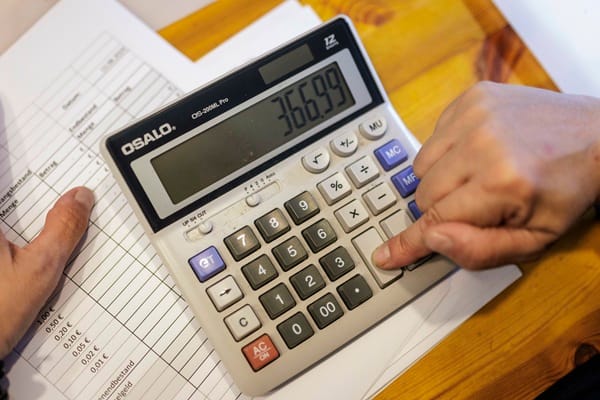The world of forensic accounting is undergoing a dramatic transformation as financial crimes become increasingly sophisticated and data volumes continue to explode. Traditional investigative methods are reaching their limits, creating an urgent need for more advanced approaches. Enter artificial intelligence—a game-changing technology that’s reshaping how forensic accounting services detect fraud, analyse evidence, and protect organisations from financial crimes.
Financial fraud costs organisations worldwide an estimated $4.7 trillion annually, while the average fraud case takes 12 months to detect. During this extended detection period, losses continue to mount, making early identification crucial for minimising damage. Traditional forensic accounting methods, while thorough and methodical, are often too slow and resource-intensive to keep pace with modern financial crimes that can span multiple jurisdictions, involve complex digital transactions, and leave subtle digital footprints across vast datasets.
This is where AI steps in as a revolutionary force multiplier, enabling forensic accounting services to process enormous amounts of data, identify subtle patterns, and detect anomalies that would be virtually impossible to catch through manual analysis alone. The integration of artificial intelligence represents perhaps the most significant advancement in forensic accounting since the digitisation of financial records.
Advanced pattern recognition transforms fraud detection
AI algorithms excel at identifying unusual patterns in financial data that may indicate fraudulent activity. Machine learning models can analyse millions of transactions simultaneously, operating at speeds and scales that human investigators simply cannot match. These systems can flag suspicious activities such as unusual payment timing or amounts, duplicate or near-duplicate transactions, abnormal vendor relationships, suspicious account activity patterns, and round-number bias in financial reporting.
What makes AI particularly powerful in this context is its ability to learn from historical fraud cases, continuously improving its capacity to detect new types of financial crimes. Unlike rule-based systems that can only identify predetermined patterns, machine learning algorithms adapt and evolve, becoming more sophisticated as they process additional data. This adaptive capability is crucial in the ongoing battle against financial fraud, where perpetrators constantly develop new methods to evade detection.
Natural language processing revolutionises document analysis
Modern forensic investigations often involve analysing thousands of emails, contracts, invoices, and other text-based documents. This process traditionally required countless hours of manual review by forensic accountants and their teams. AI-powered natural language processing tools have transformed this landscape by automatically extracting key information from unstructured documents, identifying suspicious language patterns, detecting sentiment changes in communications, uncovering hidden relationships between parties, and flagging documents that deviate from normal business communication patterns.
The sophistication of these NLP systems continues to advance, with some capable of understanding context, detecting sarcasm or coded language, and even identifying when document language suggests knowledge of wrongdoing. This capability extends beyond simple keyword searches to understand the nuanced ways that individuals might communicate about potentially fraudulent activities.
Automated mathematical analysis enhances investigation efficiency
Benford’s Law, which predicts the frequency distribution of leading digits in naturally occurring datasets, has long been a powerful tool for detecting financial manipulation. However, applying this analysis manually across multiple large datasets was time-intensive and prone to human error. AI systems can now automatically apply Benford’s Law analysis across multiple datasets simultaneously, quickly identifying deviations that warrant further investigation.
This automation allows forensic accounting services to conduct comprehensive mathematical analysis across entire organisations’ financial records in a fraction of the time previously required. The systems can analyse not just primary financial data but also subsidiary records, expense reports, inventory counts, and other numerical datasets that might reveal manipulation patterns.
Predictive analytics enables proactive fraud prevention
Perhaps one of the most revolutionary aspects of AI in forensic accounting is its ability to predict where fraud is most likely to occur. By analysing historical patterns, organisational structures, and external risk factors, AI systems can assign risk scores to different business units or processes, predict which employees or vendors pose the highest fraud risk, identify vulnerable periods when fraud is more likely to occur, and recommend preventive measures based on comprehensive risk assessments.
This predictive capability represents a fundamental shift from reactive fraud detection to proactive fraud prevention. Rather than simply discovering fraud after it has occurred, organisations can now identify high-risk scenarios before they materialise into actual losses.
Network analysis uncovers complex fraud schemes
Complex financial crimes often involve intricate networks of entities, accounts, and individuals designed to obscure the trail of fraudulent activity. AI-powered network analysis tools excel at mapping relationships between seemingly unconnected parties, identifying shell companies and layered ownership structures, tracing money flows through complex transaction networks, and detecting circular transactions and other suspicious patterns.
These tools can process relationship data across multiple dimensions simultaneously, creating comprehensive maps of financial networks that would be impossible for human investigators to construct manually. The visual representations these systems generate often reveal fraud patterns that might otherwise remain hidden within vast datasets.
Real-world impact demonstrates AI’s effectiveness
Organisations implementing AI in their forensic accounting practices are achieving remarkable results. Some report up to 90% reduction in investigation time for certain types of cases, while others have identified fraud patterns that would have been impossible to detect through traditional methods. One notable example involved a major multinational corporation that used AI to analyse expense reports across all global offices, uncovering a sophisticated reimbursement fraud scheme that had operated undetected for years. The AI system identified subtle patterns in submission timing and amounts that human auditors had completely missed.
Challenges and limitations require careful consideration
Despite its transformative power, AI in forensic accounting faces several significant challenges. Data quality and availability remain critical concerns, as AI systems are only as effective as the data they analyse. Poor data quality, incomplete records, or siloed information systems can severely limit AI effectiveness and potentially lead to missed fraud or false conclusions.
Additionally, overly sensitive AI systems can generate numerous false positives, potentially overwhelming investigators and reducing the system’s credibility over time. As AI detection methods become more sophisticated, fraudsters are adapting their techniques to evade detection, creating an ongoing technological arms race that requires continuous system updates and improvements.
The essential human-AI partnership
While AI dramatically enhances forensic accounting capabilities, it cannot replace human expertise and judgment. The most effective approach combines AI’s analytical power with human experience, intuition, and contextual understanding. Forensic accountants remain essential for interpreting AI findings within proper business context, making complex judgments about suspicious activities, conducting interviews and gathering human intelligence, presenting findings in legal proceedings, and ensuring ethical and legal compliance throughout investigations.
Future developments promise even greater capabilities
The integration of AI in forensic accounting continues evolving rapidly, with enhanced integration capabilities allowing better synthesis of multiple data sources, explainable AI developments improving legal defensibility of findings, real-time monitoring systems enabling immediate fraud detection, and specialised blockchain analysis tools addressing cryptocurrency-related crimes.
As financial crimes continue evolving in sophistication, organisations that embrace AI in their forensic accounting services will be best positioned to detect, investigate, and prevent fraud effectively. The transformation is not merely technological but represents a fundamental evolution in how financial crimes are investigated and prevented in the modern digital economy.








